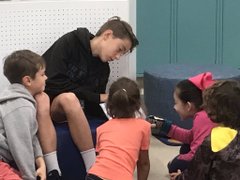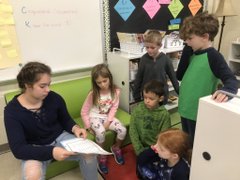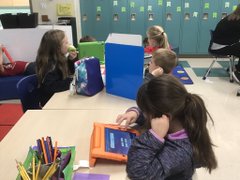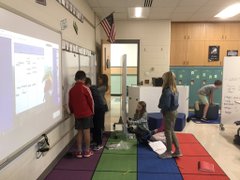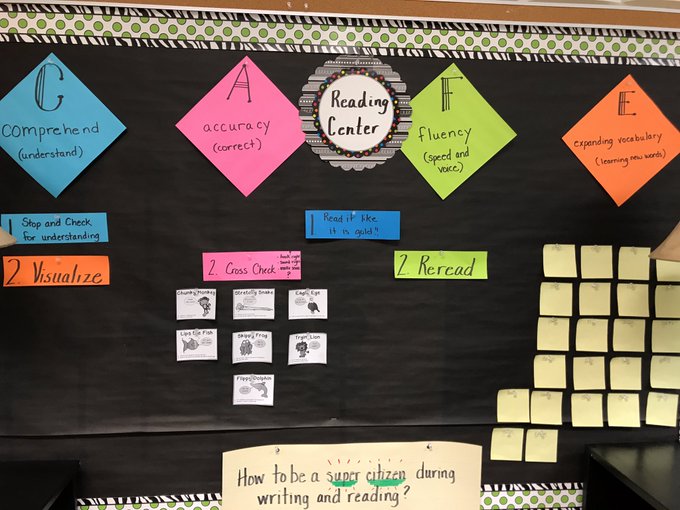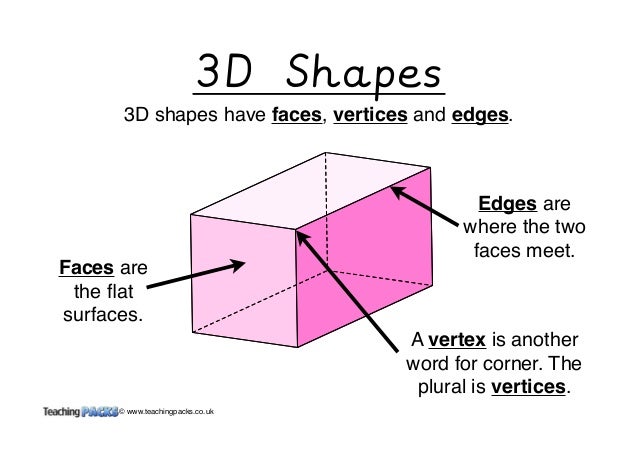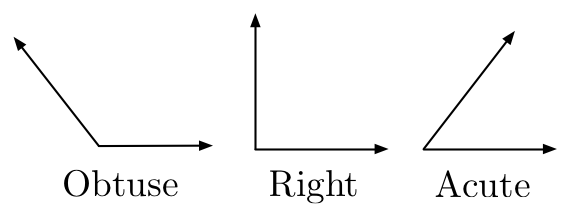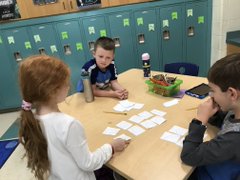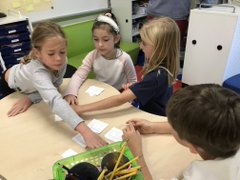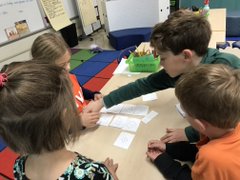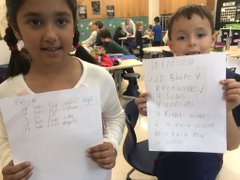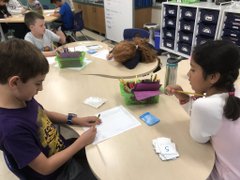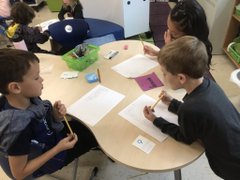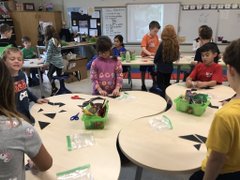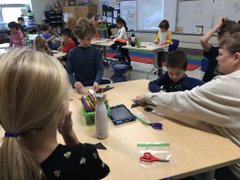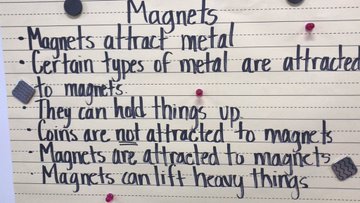Exciting news...We will have a new student, Leo, join us on the first day back from break! He comes from Pennsylvania. The boys are super excited because he loves soccer, baseball, and basketball. :) Welcome, Leo and family!
Students earned GAME DAY! We played board games, dice games, and Pictionary ALL day! We all had a blast. I promised I would let you know the names of the games we played so you would have ideas for gifts. HA! We played Tenzi, Catan Jr., Googly Eyes, Yahtzee, Cube Sudoku, and Pictionary.
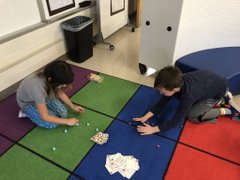
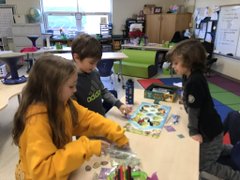

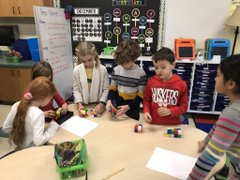
Our Snowflake Party was a success...even though we had to shorten the time by half because of our delayed start to the school day. Thank you to all parents for everything you did to help!

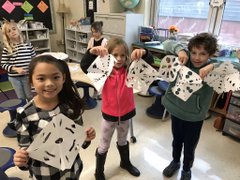
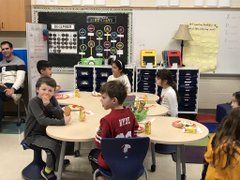
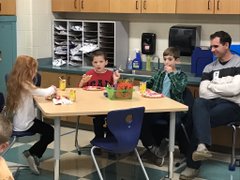

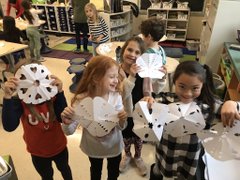
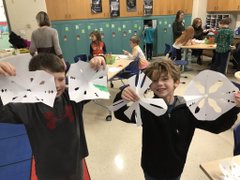
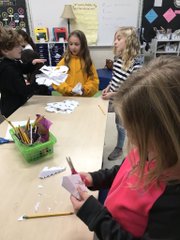
SeeSaw:
As my email indicated, students started documenting their learning on Wednesday via the SeeSaw app. Their first activity was to indicate their reading goal(s) and explain why it is important to them. The second activity was to identify 3D objects around the classroom. The final activity this week was to show you a game we play in math called Close to 20 where students receive 5 cards and they have to determine which 3 cards have a sum closest to 20. If they get exactly 20, they score 0 points. As they get farther away from 20, they accumulate the number away in points. The goal is to have the fewest number of points after 5 rounds. The SeeSaw activity shows their thinking.
Many of you are now able to view your child's activities and even make comments on them. If you have not yet accessed it, please do so. They are all very excited to show you what they've done! :) Simply click on this link (https://app.seesaw.me/s/949-738-163) https://app.seesaw.me/s/949-738-163https://app.seesaw.meOO/s/949-738-163)and find your child. Once I approve your request, you will see your child's activity responses.
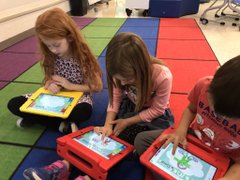
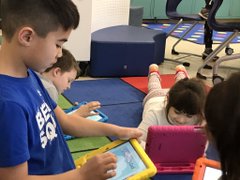

Writing:
Students have been working very hard on adding details to stories. I shared with students a very vivid favorite winter memory I had as a child. I grew up on a farm in Wyoming and like any child, I had chores. One chore was to feed and water the horses in the brisk early morning. Winter mornings were different because I had to break the ice from the water tank and feed the horses more oats and hay than normal. I remember walking out to feed the horses. It was so cold that my moon boots (am I dating myself here? - do any of you know what moon boots are?) crunched on the frozen, snowless ground. I walked up to my favorite horse, Cocoa, to pet him. Although he had a thick fur coat, he looked cold because his face had ice crystals on it. He nuzzled up against me as I brushed the crystals from his face.
After I shared this story, I asked students to share a favorite winter memory of their own. I asked students to add details to this memory so their reader could visualize it. Once they had this written, students created a fictional story that included a portion of their memory. They have been fun to read as students write them. Some are finished writing, but others are still working on it...hopefully they will still have their excitement when we return from winter break.
Ways to help at home:
Give your child a simple picture and ask them to describe it using lots of details. They could share it verbally or in writing.
Word Study:
We just finished with our final word study sort on Friday. Students have been focused and love our activity time each day. They always sort the words once, then do an activity. They love their Spelling City time where they play spelling games on the computer. We will pick up word study the second week back from winter break.
Reading:
Students have been reading book club books at their level. To reflect on what they read, students have been providing details about the character and setting, which they are able to add more and more as they get to know the character throughout the book and the setting changes. We have also worked on the large problem and solution of the book, as well as small problem and solutions in each chapter or few chapters. We discussed that sometimes there isn't a solution when we stop reading, but eventually there will be.
For read aloud, we read The Odyssey. It is an adaptation from Homer's version, which is written my Mary Pope Osborne, author of The Magic Treehouse series. It took us quite awhile, but we were able to finish it just before break. We used this book to talk about the knowledge we added about Odysseus as we continued to read about his adventures. We described the settings in detail and discussed the multitude of problems and solutions he faced.
Ways to help at home:
- Practice makes perfect! The more reading your child does, the better they will get! Research shows between 20-30 minutes per day helps growing readers improve more rapidly.
- I want students to LOVE to read, just as I do! To get them to love it, they must love the story. Let your child choose what to read. If they are excited and engaged in the story, they will want to read more and more.
- Give them their own comfy space and let them just read! :)
Math:
We finished our fractions unit and have begun our story problem/addition/subtraction unit. Students are learning MANY strategies to solve these problems, but we are N-O-T focusing on the algorithm. I beg you not to show your child (or allow older siblings to show them). They only get more and more confused when they are in class and want to use that strategy and don't know how to use it properly (or understand the reason they do what they do) and we don't focus on it. The strategies we are learning in class lead to a more clear idea of number sense and what's happening in computation. We use pictures and numbers to solve math problems. For instance, students solved this problem... 46 + ___ = 60
A few used this strategy:
46 + 4 = 50
50 + 10 = 60
so, 4 + 10 = 14
OR
46 + 10 = 56
56 + 4 = 60
so, 10 + 4 = 14
OR
counting on strategy:
46 in my head 47, 48, 49, 50, 60, so 4 + 10 = 14
OR
tens and ones in pictures:

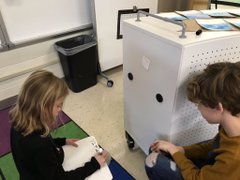
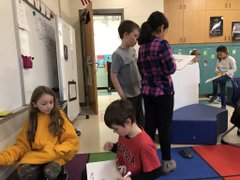
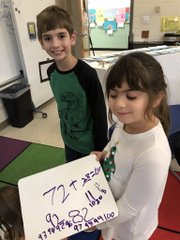

Students also learned how to show a number in ALL the ways. We talked about being methodical and organized...they listened! :)


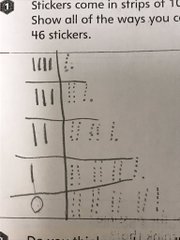
Ways to help at home:
- Ask your child to show you how to solve a problem a few different ways!
- Allow your child some time on Reflex Math. This will increase their math fact fluency.
Social Studies:
Students have been learning all about the United States of America. Through POGIL exercises, students have learned about rivers, lakes, mountain ranges, and a few states. What is POGIL you ask? It stands for Process-Oriented Guided Inquiry Learning. This means that information is provided to students and as a small group, they work together to come to conclusions. They enjoyed working together throughout this unit. Students learned about the James River (located in Virginia), the Rio Grande (runs from Colorado south and follows the border of Texas and Mexico), and the Mississippi River (flows from the Great Lakes south to the Gulf of Mexico). Students also learned about the Rocky Mountains and the Appalachian Mountains.
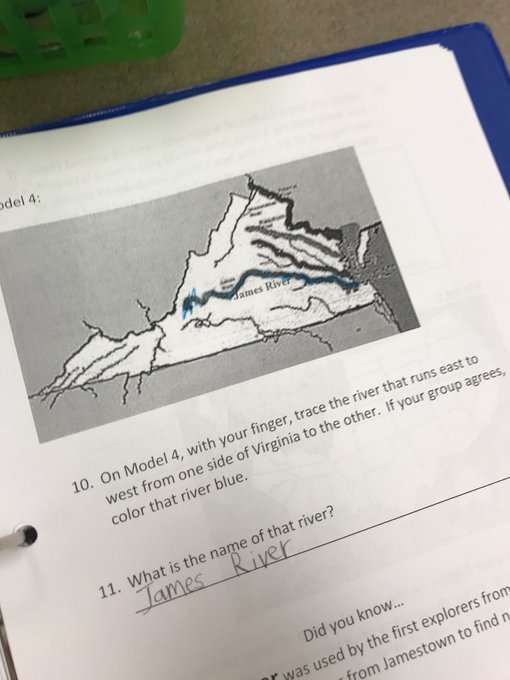
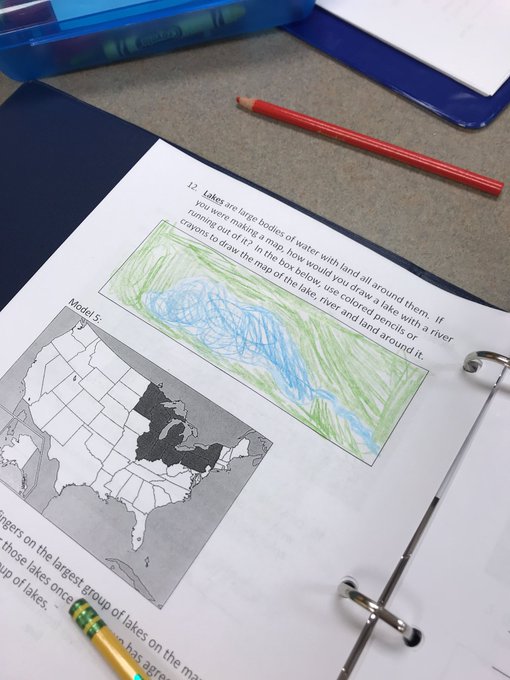
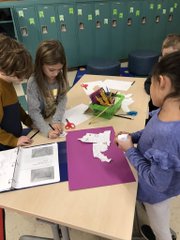
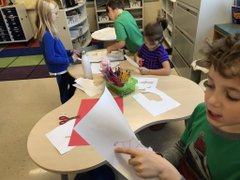
Ways to help at home:
-Ask your child where the rivers and mountain ranges are located. Ask them how they remember where the Mississippi River is located. If they don't remember, mention Mr. MIMAL. :)

